| Year-round Resident |
Black Vulture
Coragyps atratus
| Year-round Resident |
Both Turkey and Black Vultures are year-round residents in the Washington metro area. Migrant populations of both species also pass through.
Where to See Them in the Park
Turkey and Black Vultures are often seen soaring high over Monticello Park, but not perched in the park. To see a perched vulture, you should visit an area where they nest or roost. Turkey Vultures are more common than Black Vultures.
Physical Descriptions
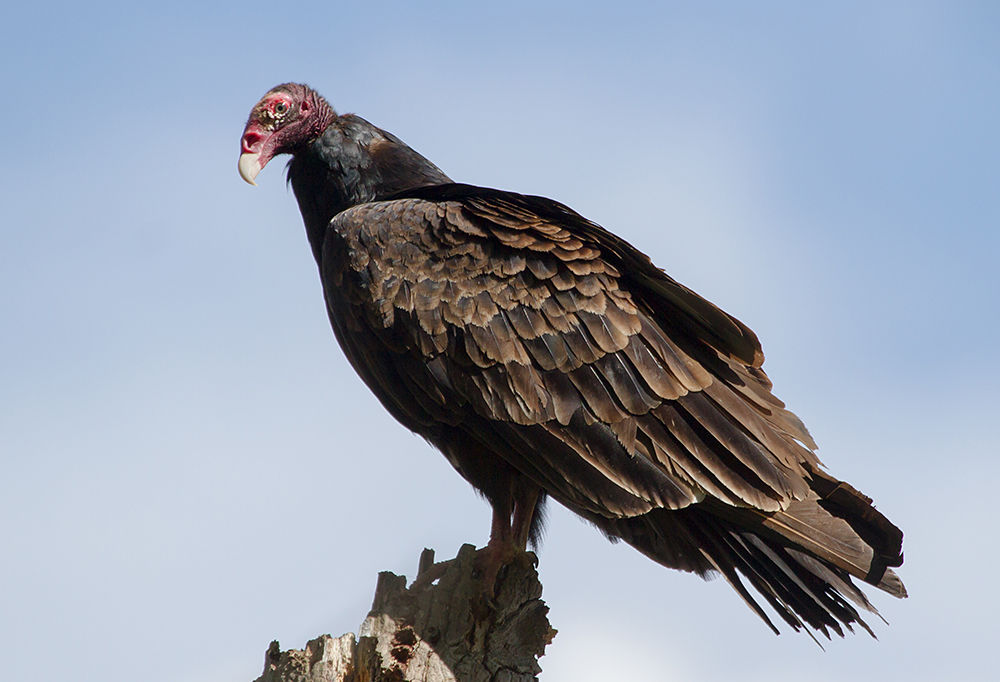
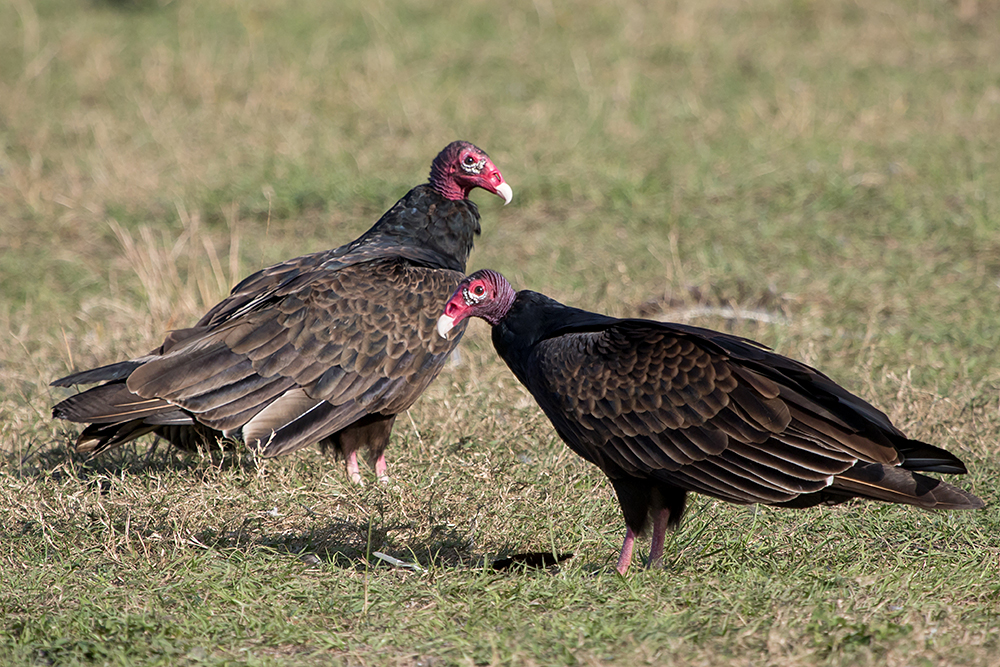
Turkey Vultures are the larger of the two species and have a longer tail. The adults have a red head.
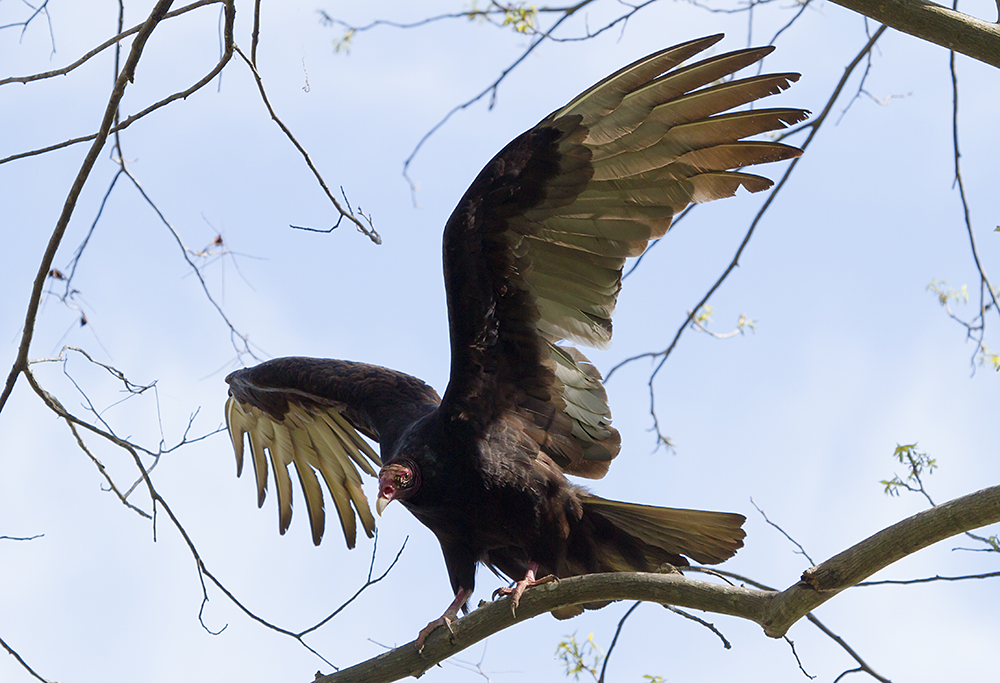
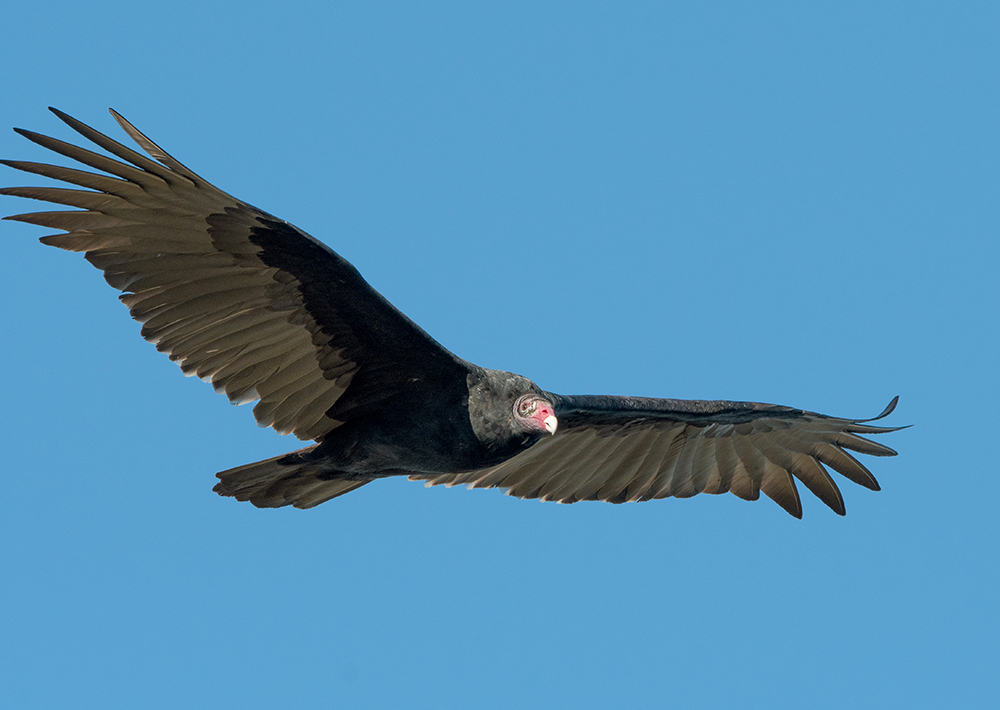

The bottom portion of their wings is gray, and their wingbeat is slow. Sometimes, a soaring Turkey Vulture will rock in the wind. The sexes are similar.
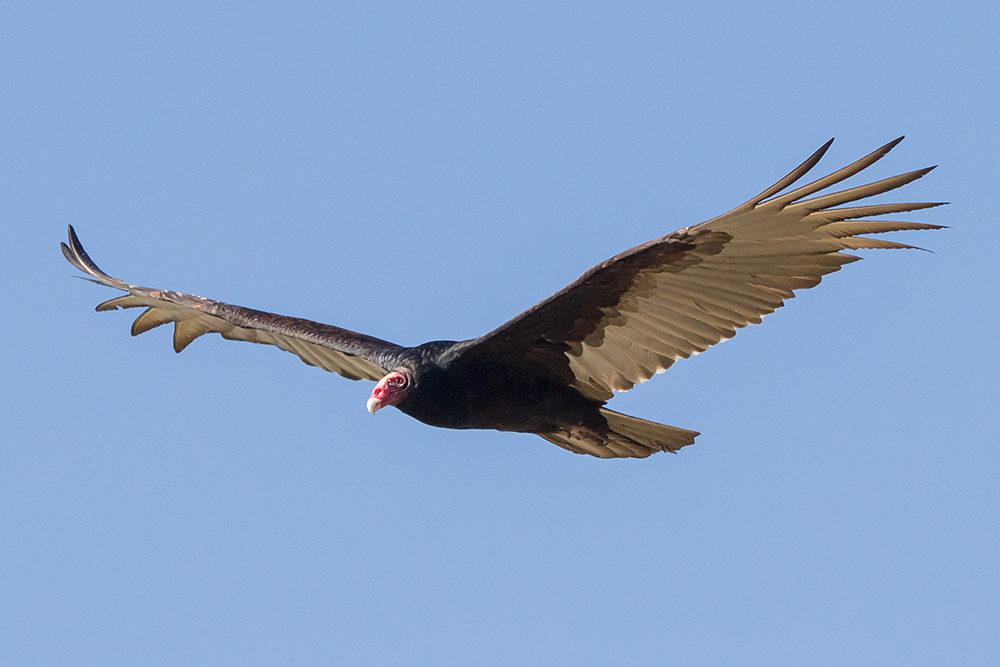
Turkey Vultures hold their wings in a V-shape known as a dihedral. The Turkey Vulture's initials are TV, and some people use the initials to remember that the dihedral is similar in shape to an old TV antenna.
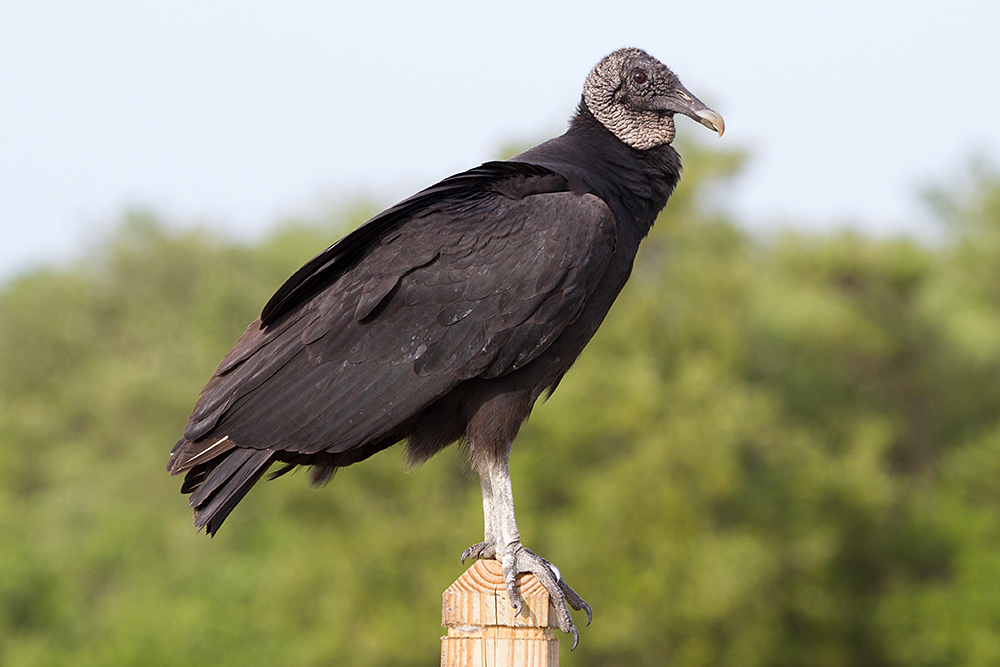
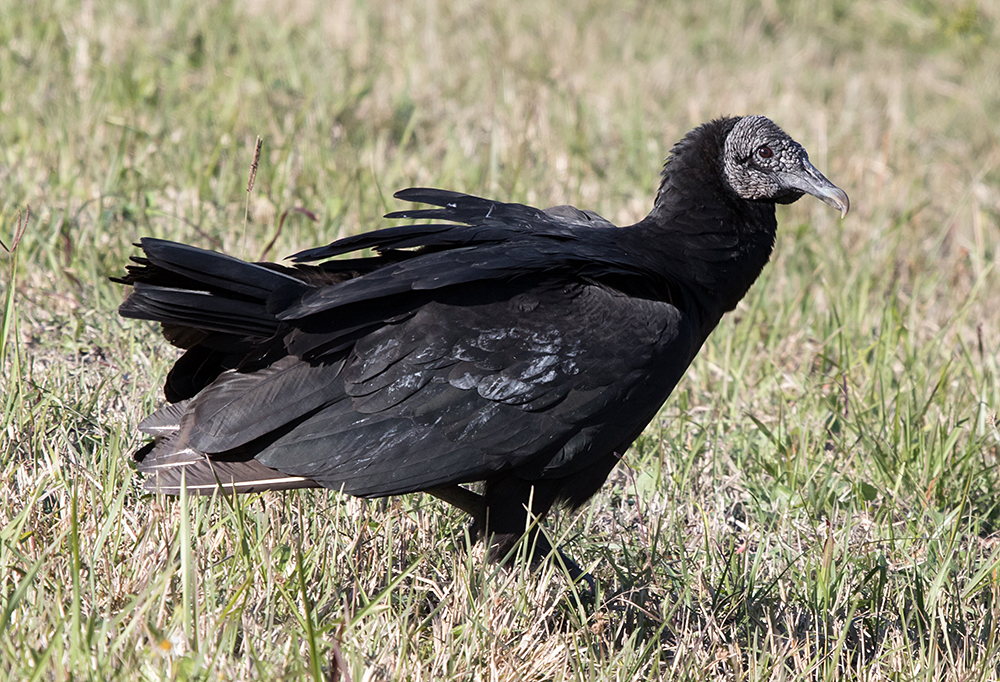
Black Vultures have a black head. Juvenile Turkey Vultures also can have a dark head, so you cannot identify a Black Vulture solely by head color.
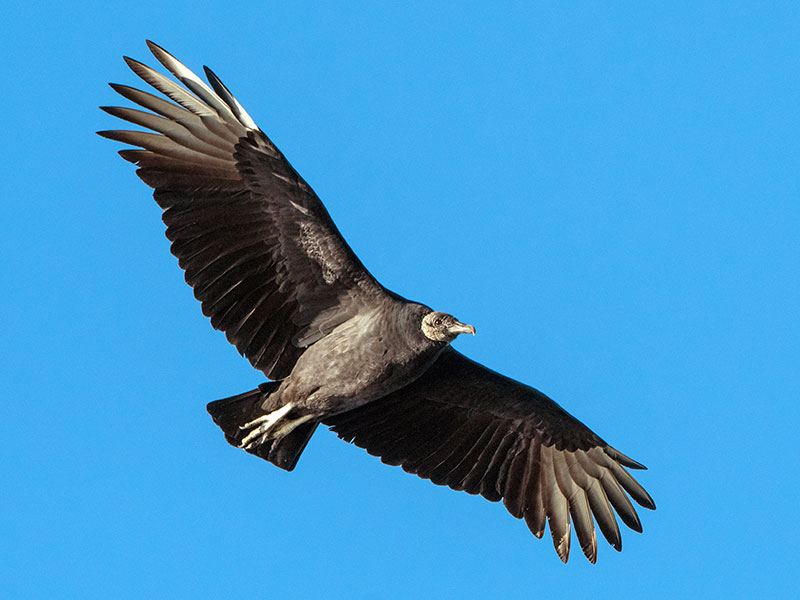
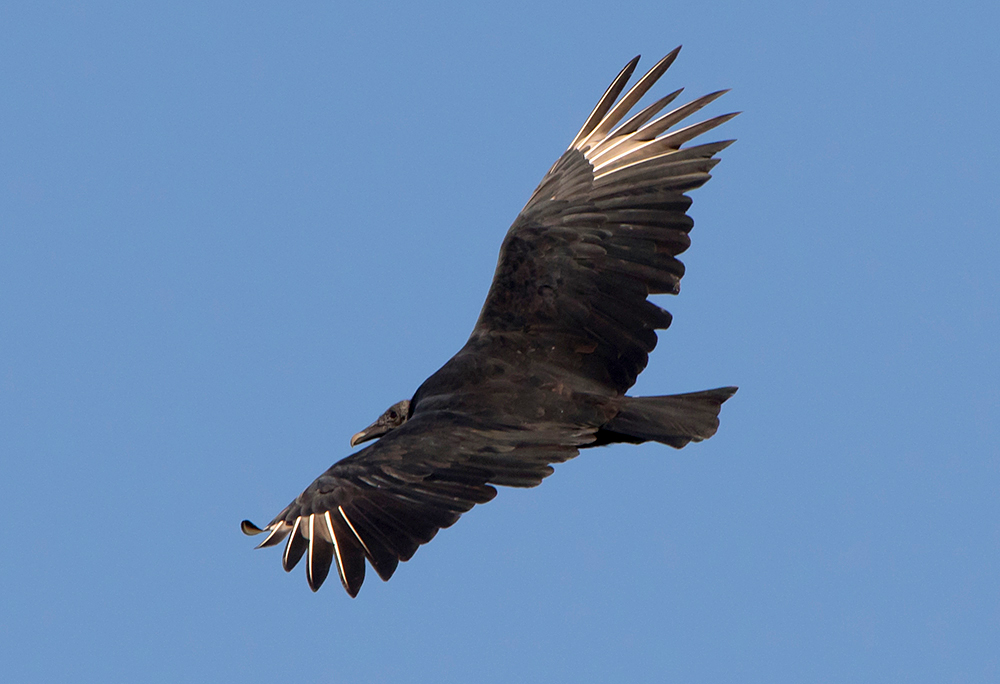
Black Vultures are smaller and shorter-tailed than Turkey Vultures. Their wingbeat is faster, and their dihedral is much less pronounced. The bottom edge of their wings is black, and the best fieldmark is the light gray wing tips.
Vocalizations
Turkey and Black Vultures are mostly silent, so there is little reason to learn their vocalizations. If you approach one who is perched, it might hiss at you.
Notes
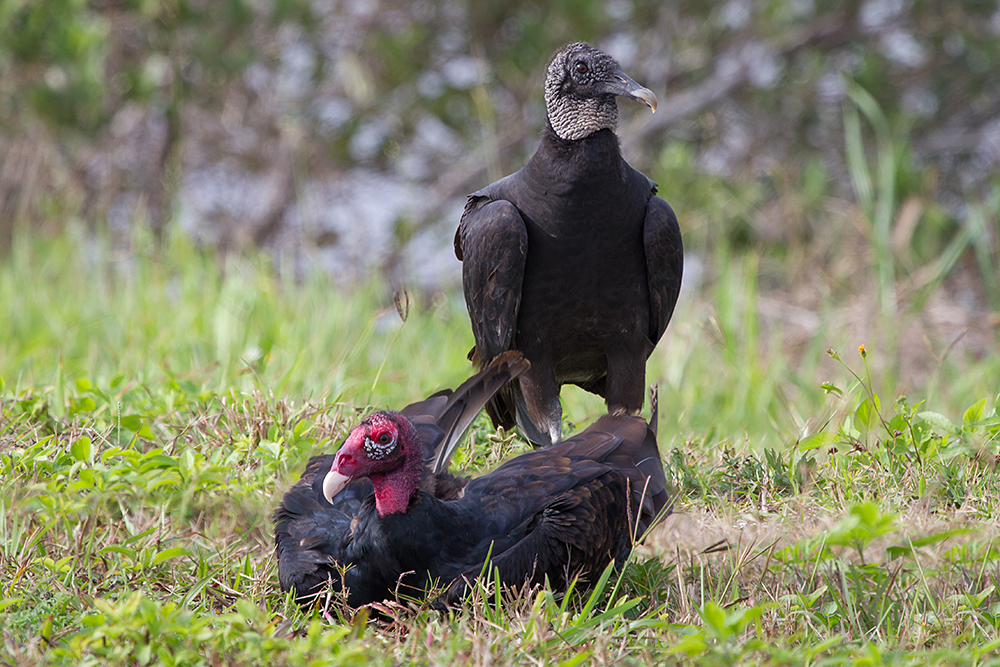
The New World Vultures are not in the same family as hawks and eagles. They also are not related to vultures in other parts of the world, who are in the same family as hawks and eagles. Turkey Vultures have an excellent sense of smell, but Black Vultures locate food mostly by sight. You often see the two species soaring together. Sometimes, Black Vultures follow Turkey Vultures, hoping to share a dead animal located by the Turkey Vultures. Both species have unfeathered heads, which are easier to clean after they have been stuck into a dead animal.
Origin of Names
Common Names: Turkey from their head, which resembles the head of a turkey. Black from their plumage. Vulture means tearer.
Genus Names: Cathartes means purifier. Coragyps means raven vulture.
Species Names: Aura is a South American name for a Turkey Vulture. Atratus means clothed in black as if in mourning.
Turkey Vulture video footage
Black Vulture video footage
Return to the Index
